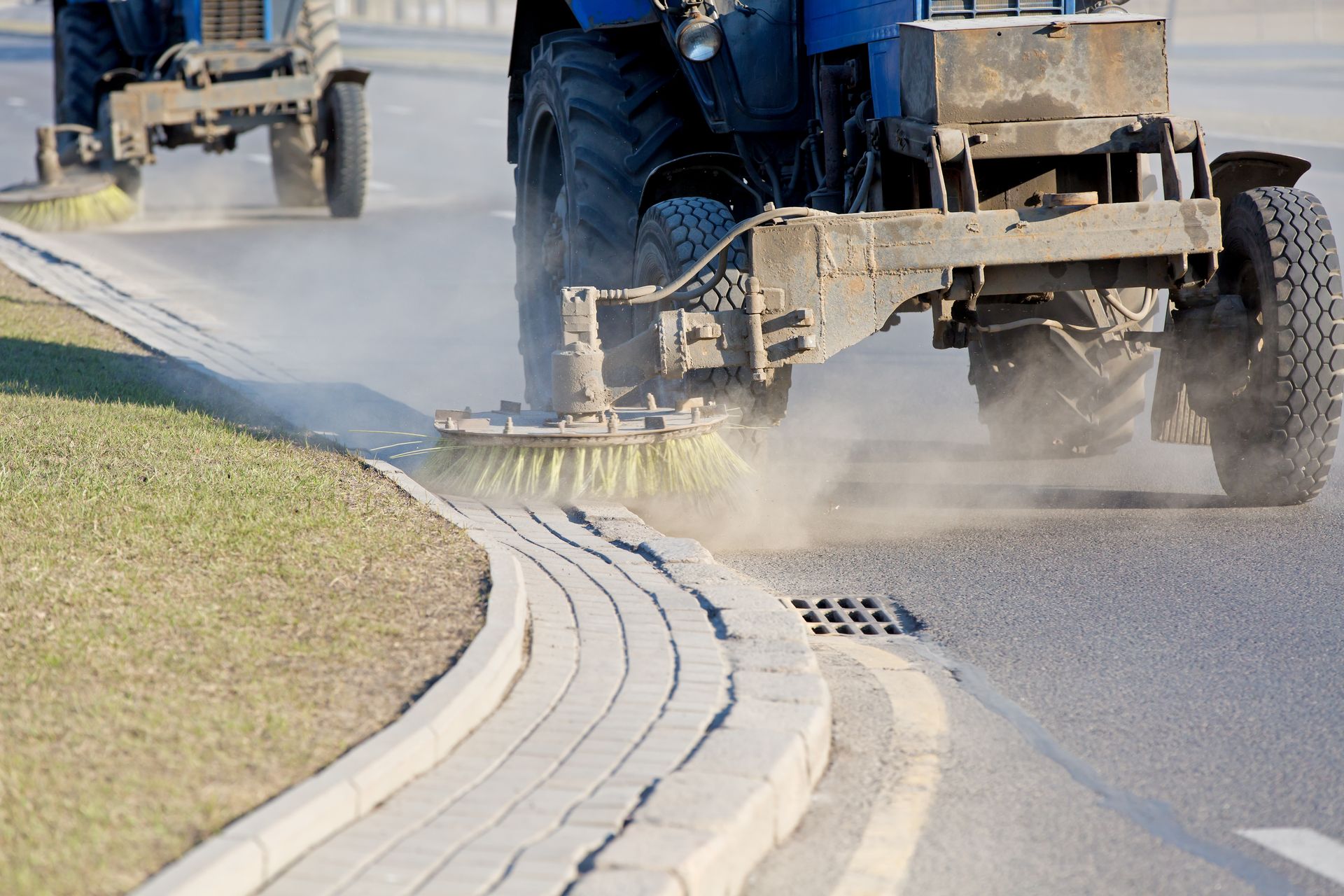Many people associate street sweeping with urban planning, but its use extends beyond municipal planning. One of the lesser-known benefits of regular street sweeping is its significant contribution to stormwater management, especially for construction sites where many harmful materials tend to gather.
Used in tandem with other stormwater BMPs, street sweeping can be an effective tool to remove pollutants from runoff and place less stress on other perimeter controls. This guide will explore the role that street sweeping plays in stormwater management and why it’s such a vital tool in any site manager’s arsenal.
Understanding the Role of Street Sweeping in Stormwater Management
Most roads and construction sites are designed to allow water to flow to a certain point for it to discharge and prevent it from pooling. However, as rain passes over these impermeable surfaces, it often collects dirt, debris, and other pollutants that it washes away with it to its final destination (i.e., the sewer or your local pond).
Many aquatic organisms can be harmed by these harmful pollutants due to direct chemical exposure, reduced sunlight (via turbidity), or even alterations in the water’s oxygen content.
The goal of a stormwater management plan is to eliminate pollutants from mixing with stormwater runoff and to control the amount of water that is discharged from a site to prevent flooding. Street sweeping assists these goals in two ways:
- Removing pollutants, such as sediment, chemicals, and debris, will harm nearby ecosystems.
- Removing debris that can accumulate and block storm drains and other discharge points prevents flooding.
Additionally, street sweeping can be a very cost-effective way to control pollutants on your worksite and facilitate the filtering of sediment and other debris by other stormwater BMPs.
The Benefits of Incorporating Street Sweeping in Your Stormwater Management Plan
1. Pollution Removal:
One of the primary benefits of street sweeping is its ability to remove accumulated pollutants from paved surfaces before they can be washed into storm drains. This includes debris such as leaves, litter, sediment, and hazardous materials like motor oil, building materials, and brake dust. By preventing these pollutants from entering the stormwater system, street sweeping helps maintain water quality and reduce the risk of contamination in rivers, lakes, and coastal areas.
2. Reduction of Total Suspended Solids (TSS):
Total suspended solids refer to particles suspended in water that can include organic matter, silt, and other pollutants. Street sweeping effectively reduces TSS by preventing these particles from being carried away by runoff. This is particularly important in meeting regulatory standards for water quality and ensuring that aquatic habitats remain healthy.
3. Prevention of Nutrient Loading:
Nutrients such as phosphorus and nitrogen, often found in fertilizers and organic matter, can lead to excessive algae growth in water bodies—a phenomenon known as eutrophication. Street sweeping helps prevent nutrient loading by removing organic debris and preventing it from decomposing and releasing nutrients into the stormwater system.
4. Improved Drainage Infrastructure Efficiency:
Regular street sweeping helps maintain the functionality of storm drains and drainage infrastructure. Accumulated debris can clog drains, leading to localized flooding during heavy rainfall events. By keeping these systems clear, street sweeping reduces the risk of urban flooding and ensures that stormwater can flow efficiently to treatment facilities or natural water bodies.
5. Enhanced Aesthetic Appeal and Community Well-being:
While the primary focus of street sweeping is stormwater management, its secondary benefits should not be overlooked. Clean streets contribute to a better-finished product, thus increasing the curb appeal of any building you complete.
6. Assist Downstream BMPs:
By removing excess pollutants, it can expand the longevity and efficacy of other stormwater BMPs, such as silt fences, storm drain inlet barriers, and wattles that are designed to block and filter out pollutants as water is discharged.
7. Cost-Effective:
Compared to other long-term B<Ps, street sweeping is very affordable, especially on smaller construction sites.
Street sweeping is an excellent tool for stormwater management that can benefit many construction sites. To learn more about stormwater management and street sweeping, contact the experts at Valor Environmental.
FAQs
1. Why is street sweeping important for stormwater management?
Street sweeping plays a crucial role in stormwater management by preventing pollutants such as sediment, oil, debris, and chemicals from entering storm drains and water bodies. This helps maintain water quality and reduces the risk of contamination in aquatic ecosystems.
2. How does street sweeping improve water quality?
By regularly removing accumulated debris and pollutants from paved surfaces, street sweeping reduces the total suspended solids (TSS) in runoff. This prevents these pollutants from being washed into storm drains and helps meet regulatory standards for water quality.
3. What pollutants does street sweeping remove?
Street sweepers effectively remove a variety of pollutants, including leaves, litter, sediment, motor oil, brake dust, heavy metals, and organic debris. These pollutants can degrade water quality and harm aquatic life if they enter storm drains untreated.

